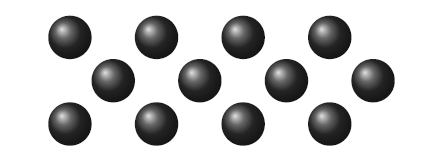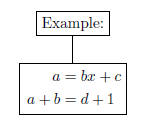Erste Beta-Version von LyX 2.0 erschienen
Die erste Beta-Version von LyX 2.0.0 wurde heute veröffentlicht. Es gibt viele neue Features:
- ein neues Debugging-Fenster zur Anzeige von Übersetzung-Fortschritt, Debugging-Nachrichten und Ausgabe externer Programme,
- eine Sofort-Vorschau basierend auf dem preview-Paket,
- on-the-fly Rechtschreibprüfung,
- multilingualer Thesaurus,
- verbesserte Suchfunktion mit Format-Angaben,
- Vorwärtssuche – direkt aus einer LyX-Zeile in die DVI/PDF-Ausgabe springen,
- Dokumentvergleich,
- Kontext-Menus im Outliner,
- XHTML-Ausgabe,
- Multi-Index Unterstützung,
- XeTeX Unterstützung
- Besere Ausgabe-Kontrolle,
- Native includeonly-Unterstützung zum Übersetzen von Teildokumenten,
- Unterstützung von mehr LaTeX-Befehlen und Paketen (phantom-Befehle, makebox, nameref, ulem, lettrine, …)
- Unterstützung des refstyle-Pakets anstelle von prettyref,
- Unterstützung für weitere Sprachen (Schweizerisch, Turkmenisch) und Kodierungen (applemac),
- Verbessertes branches-Feature,
- Bessere Tabellen-Behandlung,
- Einige neue Größen-Features (Papier, Zwischenräume),
- Bessere Farben-Einstellungen,
- Unterstützung von geforderten (neben optionalen) Argumenten,
- Neue Subversion-Features,
- Unterstützung von Lilypond Musik-Notation
und viele mehr.
Für mehr Informationen und Download siehe:
- die Liste der Änderungen,
- die LyX Homepage,
- die Ankündigung auf der Mailing-Liste,
- den Download-Bereich.
This text is available in English. Dieser Text ist auch in Englisch verfügbar.
First beta of LyX 2.0 released
The first beta release of LyX 2.0.0 has been published today. New features are
- A new debugging pane showing the progress of compilation, debugging messages and output of external programs
- An instant preview inset based on the preview package
- Spell-checking on the fly
- A multilingual Thesaurus
- Advanced search feature with format consideration
- Forward search – directly jumping from a particular row in LyX to the DVI/PDF output
- A document comparison feature
- Context menus for the outliner
- XHTML Output
- Support for multiple indices
- Support for XeTeX typesetting
- Better output control
- Native includeonly support for compiling selected subdocuments
- Support for more LaTeX commands and packages (phantom commands, makebox, nameref, ulem, lettrine, …)
- Support of the refstyle package instead of prettyref
- Support for further languages (Swiss, Turkmen) and encodings (applemac)
- Enhanced branches feature
- Improved table handling
- Some new size features
- Better color handling
- Support for required arguments (beside optional)
- New subversion features
- Support for Lilypond music notation
and there are many more.
For more information and download visit:
- the List of changes,
- the LyX Homepage,
- the announcement on the mailing list,
- the download area.
This text is available in German. Dieser Text ist auch in Deutsch verfügbar.
ConTeXt Mark IV support in MiKTeX
The recently released version 2.9 of MiKTeX, which is the first MiKTeX release with LuaTeX integration, now supports ConTeXt Mark IV, as Christian Schenk announced.
TeX Live 2010 and MacTeX 2010 released
TeX Live 2010 is available now.
Some changes in 2010, like announced in this blog post:
- pdfLaTeX automatically converts EPS files for inclusion, as already been planned but dismissed for the previous release
- The execution of a some external commands from TeX, via write18, is now enabled by default.
- The default PDF version for the output is now 1.5 allowing a better compression.
- Some programs have been added: pTeX for Japanese typesetting, chktex, the dvisvgm converter, further BibTeXU for Unicode support in BibTeX.
- XeTeX now uses microtype for margin kerning but doesn’t support font expansion yet.
For more information and download visit
- the Homepage of TeX Live
- the list of changes
- TeX Live availability for download and dvd ordering,
- Donating to TUG Activities
- Contributing to TeX Live as user, author or developer.
MiKTeX 2.9 Beta erschienen
Die Beta-Version von MiKTeX 2.9 ist erschienen, sie läuft mit Windows 7, Vista, XP (ab SP 3), Server 2003 und 2008 (ab SP 2).
Zum ersten Mal ist LuaTeX integriert und es wurden einige Software-Pakete aktualisiert. Für mehr Informationen siehe
- die MiKTeX Homepage,
- die 2.9 Status-Seite,
- die Release notes,
- die Ankündigung im blog,,
- den Download/Installations-Bereich.
Die finale Version von MiKTeX 2.9 soll im Oktober kommen.
This text is available in English. Dieser Text ist auch in Englisch verfügbar.
MiKTeX 2.9 Beta released
The beta version of MiKTeX 2.9 has been released. Windows 7, Vista, XP (at least SP 3), Server 2003 and 2008 (at least SP 2) are supported, Windows 2000 no longer.
LuaTeX has been integrated for the first time and several software packages have been updated.
The final version of MiKTeX 2.9 will be released in October.
For more information visit
- the MiKTeX homepage,
- the 2.9 status page,
- the release notes,
- the blog announcement,
- the download/setup area.
This text is available in German. Dieser Text ist auch in Deutsch verfügbar.
Trees in TikZ
Peter Smit asked on TeX.SX:
How to make a three level deep tree with TikZ?
I am busy making a full binary tree of three levels deep.
The code I am having now is (using the trees library):
\begin{tikzpicture} \node {root} child {node {left} child {node {lleft}} child {node {rleft}} } child {node {right} child {node {lright}} child {node {rright}} }; \end{tikzpicture} |
The problem is that rleft and right are printed over each other.
Preferably I would like TikZ to figure this out by itself, for example if I give a minimum distance between nodes on the same level. Is this possible? (My final nodes will not have text but will be fixed size shapes)
Off course it can be that the solution is: “Don’t use ‘trees'”. In that case, what is the best way to do this?
Answer:
You could specify options for each level, for instance silbling distance but also level distance.
Example:
\documentclass{article} \usepackage{tikz} \usetikzlibrary{trees} \begin{document} \begin{tikzpicture}[level distance=1.5cm, level 1/.style={sibling distance=3cm}, level 2/.style={sibling distance=1.5cm}] \node {root} child {node {left} child {node {lleft}} child {node {rleft}} } child {node {right} child {node {lright}} child {node {rright}} }; \end{tikzpicture} \end{document} |

LaTeX3 news
Issue 4 of the LaTeX3 news has been published today.
Manually installing a package on MiKTeX (Windows)
Mbmcavoy asked on TeX.SX:
How can I manually install a package on MiKTeX (Windows)?
I’m using MiKTeX on Windows. My employer’s locked-down network blocks the application’s automatic installation function. I can take my laptop home and successfully install from there, but if I need a package in the middle of the day I’m stuck.
I am able to access the CTAN website and download the package files (.dtx or .ins?), but I don’t know what do do with them. How can I do a manual package installation?
The answer on TeX.SX explains three ways:
- Installing a package available as dtx/ins bundle
- Installing sty or cls files
- Obtaining and installing packaged universal archives in tds format
and it
- Gives links to further information
- Shows a different and very effective way, using a local repository
Checkers board with TikZ
Lukasz Lew asked on TeX.SX:
What is the best way to draw a checkers board in TikZ?
I’m interested in what is the best way to draw many circular pieces on board. The checker background is not important.
Answer:
I suggest to use a matrix of nodes from the TikZ matrix library.
\documentclass{article} \usepackage{tikz} \usetikzlibrary{matrix} \begin{document} \tikzstyle{ball} = [circle, shading=ball, ball color=black!80!white, minimum size=1cm] \begin{tikzpicture} \matrix (m) [matrix of nodes,nodes=ball] { {} & & {} & & {} & & {} & \\ & {} & & {} & & {} & & {} \\ {} & & {} & & {} & & {} & \\}; \end{tikzpicture} \end{document} |
Output:

Aligned equations inside of a TikZ node
Lukasz Lew asked on TeX.SX:
How can I create a tree node with aligned math equations inside?
\begin{align} \end{align} |
doesn’t work and
\begin{minipage}{100} \begin{align} ... \end{align} \end{minipage} |
gives a lot of margin and I don’t want to manually tune.
\nodepart from shapes tikz library seems to be overkill and doesn’t do the alignment.
Any ideas?
Answer:
You could use an aligned environment with inline math inside nodes, their size is automatically calculated. Here’s a small example with such a node in a tree:
\documentclass{article} \usepackage{tikz} \usepackage{amsmath} \begin{document} \begin{tikzpicture}[every node/.style={rectangle,draw}] \node {Example:} child {node {% $\begin{aligned} a &= bx + c\\ a+b &= d +1 \end{aligned}$}}; \end{tikzpicture} \end{document} |
Output:

TeX, LaTeX and Friends – ein neues TeX-Forum
Nach 7 Tagen im eingeschränkten Beta-Status ist die Webeite http://tex.stackexchange.com nun für die Öffentlichkeit freigegeben. Jeder kann sich dort registrieren und Fragen zu TeX lesen, stellen oder beantworten. Wie auf der populären Seite Stack Overflow kann das Publikum die Güte der Antworten bewerten. So sind die besten Antworten leicht zu finden: an der Spitze der Antworten-Liste.
Die Seite ist nun im öffentlichen Beta-Test. Dieser wird zwischen 60 und 90 Tagen andauern, dann werden wir sehen, ob sie erfolgreich ist und online bleiben wird.
Jetzt, nach 7 Tagen eingeschränktem Beta-Test, hat die Seite 323 angemeldete Nutzer und 658 Antworten auf 242 Fragen.
This text is available in English. Dieser Text ist auch in Englisch verfügbar.


